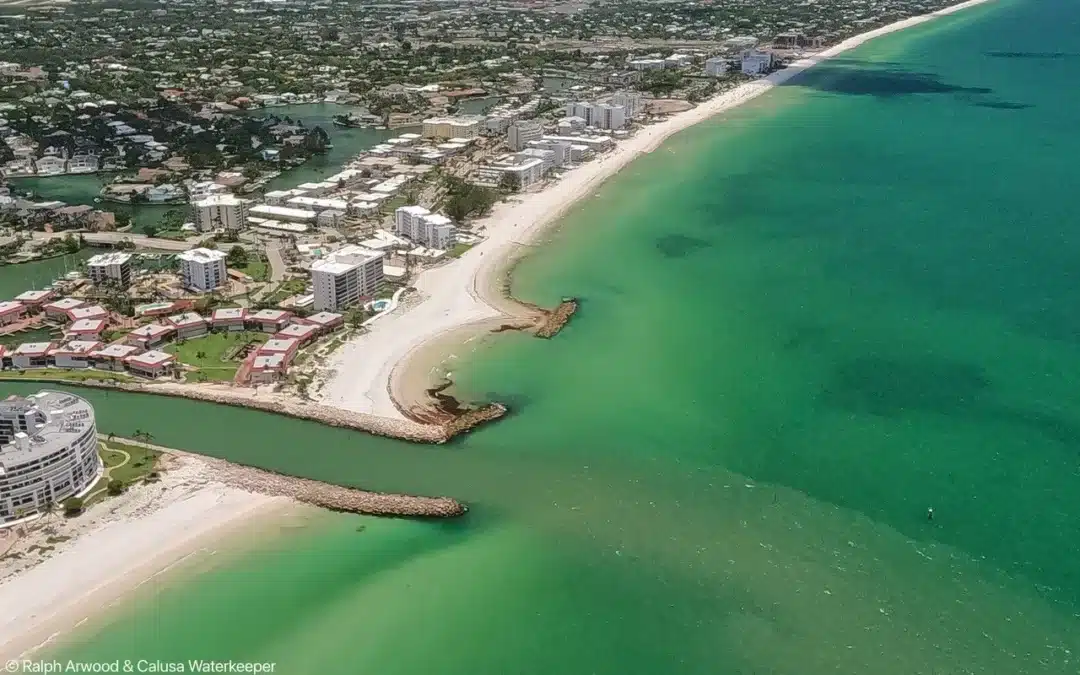From Naples to Lake Okeechobee and along the Caloosahatchee in between, algae is troubling Southwest Florida.
A bloom currently coats more than 350 square miles of the lake; scientists have sampled cyanobacteria in multiple spots on the river and Collier County beach water is brown as saltwater species rolls on the surf.
The different places have different varieties, some requiring more caution than others.
A cyanobacteria bloom on the big lake encompasses some 380 square miles, according to satellite images shot Wednesday by the Copernicus Sentinel satellite. However, the National Oceanographic and Atmospheric Administration points out that’s a decrease from the previous day, though winds and clouds may affect the imagery.
Calusa Waterkeeper’s eye in the sky, volunteer pilot Ralph Arwood noted after a flight over Collier County, “Looks like Trichodesmium scattered all along the coast.”
The next day, the city of Naples blasted out an email subject-lined: “Things to Know: Why is the water brown at the beach?” The answer, as Arwood predicted, Trichodesmium, an algae variety known as “sea sawdust” on account of its fine particles which are visible in the water it colonizes. Though its blue-green algae, it can tint the water colors ranging from silvery white to rusty brown. Trichodesmium’s smell veers between sweet and vegetative decay, and can be downright nauseating if the breeze is right.
Continue Reading

























